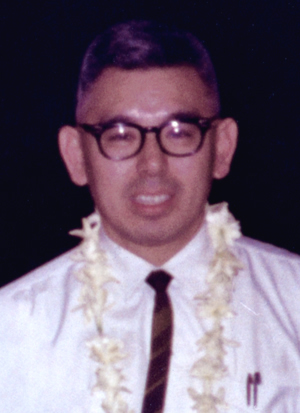Built to Blast - Page 3
“We were primarily a building materials business,” Ralph says. “The houses were built primarily to demonstrate the value of a concrete block house. We would hold each house open for a time, and then sell it eventually.”
The homes, Jerry says, were a “minor” part of the operation.
Besides blocks, the company sold other building materials. Later, Blomberg shifted to windows and sliding glass doors.
The Blombergs had a secondary goal as well—selling land, which Gus subdivided into lots.
Throughout the neighborhood—and in town, where several other homes were partially developed by the Blombergs—concrete homes can be spotted. Many are ranch-style, a few are modern, others are what Jerry calls “just like houses”—built by building contractors or individuals using various types of Blomberg block.
The Blombergs even had their own drafting service, Jerry says. “People came in and got their hopes and dreams designed,” he says, “then took it to the building department.”
If you see a concrete house in Sacramento, he says, “there’s a 99 percent chance they were our blocks.” The Blombergs’ best residential customer was a builder named Manuel Jacinto (of Portuguese heritage, so he understood masonry, Jerry says), who built more than 1,500 block homes in the Sacramento area. They are “just houses,” Jerry says.
But what’s really fascinating about the houses built by the Blombergs themselves is how modern they are. If the goal was simply to push product and land, why make them so stylish?
Ralph Blomberg says it’s because modern was attractive—and attracted attention.
“It was just a philosophy of creating a stylish use of the material,” he says. “To show concrete block wasn’t limited to barns and garages.”
Many buyers considered concrete block a cheap material, not suitable for homes. Jerry remembers when buyers shied away from his father’s earlier homes, which he built in the late 1930s and early 1940s. “Oh man,” they’d say, “that’s terrible. How can you live in that chicken house?”
“That’s why the house on Tradewinds Avenue was important,” he says, referring to the house with the bomb shelter basement he built in 1961. “Because it didn’t look cheap.”
It is, in fact, quite a wonderful house, designed by George Muraki. Jerry raised his family there. A recent remodel spearheaded by Jerry gave it a more traditional interior while preserving its modern bones—an open plan with every room opening onto a patio through sliding glass.
The exterior has a decorative concrete screen, and a long carport supported by concrete block pillars.
One cool detail that remains, though in a damaged state, is a patio mural in stucco relief by Jerry’s brother Harold, the artist of the family who also handled concrete block sales.
Southern California photographer Julius Shulman was brought north to shoot the Tradewinds Avenue home when it was new, and many of those photos found their way into the December 1961 issue of House & Home magazine, billing the home as the ‘House of Light.’
Jerry, who read Arts & Architecture, the Los Angeles magazine that pushed modernism in the 1940s and ‘50s, says he regarded the homes as a way “to express yourself. But it was modified and organized around making a living.”
 |
|
|
 |
|
|
 |
|
|
Gustaf had an interest in architecture, and even met Los Angeles modernist Richard Neutra, Jerry says.
It wasn’t just open plans and big windows that made the Blomberg homes modern. It was the concrete blocks themselves.
Concrete, though used by the Romans for aqueducts, was very much a new material in the 1940s—at least for housing. Frank Lloyd Wright, as in so many things, had pioneered the way with his 1920s textile-block houses in Los Angeles.




